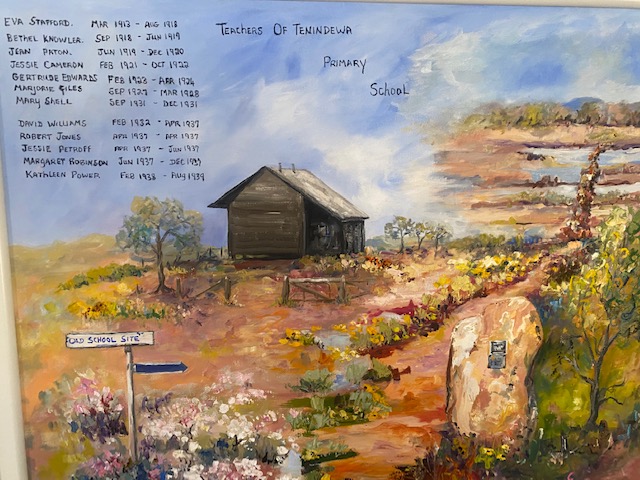
Speech by Tony Critch at the Opening on 11 April 2015
Ladies and gentlemen and especially children, welcome. Today, roughly 100 years ago, a real school was opened on this very site.
The reason the Tenindewa Community have replicated the old school and brought you all this way today is of course not about what you see today, which is a very simple picnic shed, but it is a structure of symbolism that has been constructed to honour and respect the resolve, foresight and courage of the pioneers that were responsible for the original building that stood on this very spot. The opening of that building was on or about the 15th March 1915. The teachers are of course paramount in our praise and we will focus on some of those wonderful people in a few minutes.
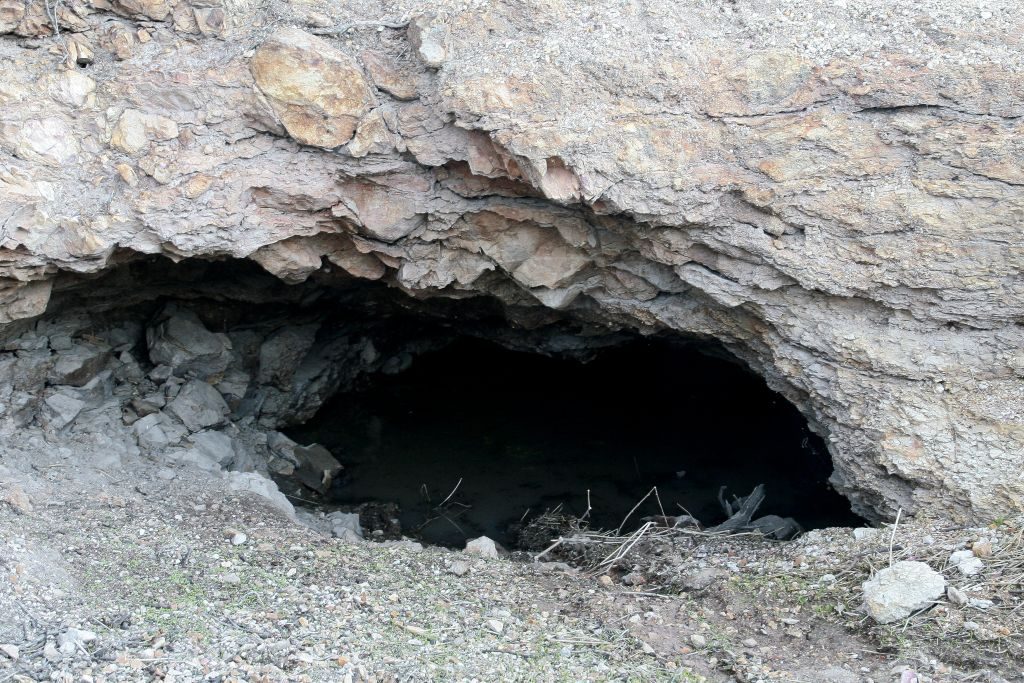
This soak or aboriginal well could have been constructed 1000s of years ago. It is still there immediately adjacent to the dam on the east side of the dam.
I am most conscious that in many cases those gutsy, busy, tough pioneers were in fact your relatives, your forefathers. Unfortunately in some cases the names have ceased to exist locally but the connections are still here. I think firstly of the aboriginal folk who’s natural ability to survive in this harsh rugged environment and who’s involvement and language gave us the very name Tenindewa. Their time in this patch is of course immeasurable and unrecorded and it is beyond our comprehension as to how they managed and thrived. Interestingly though and somewhat uniquely the very first man made structure on this Reserve is the aboriginal soak that survives to this day and can be seen to the right of the dam on the Old Mullewa Road some 500 metres from this site. Those of you that know of the Book, My Fortunate Life by Albert Facey, may recall his descripting of that very Soak in the chapter titled “On the Road to Mullewa” in his adventure in 1907.
I think now of the first European settlers like Fry, Stafford, Meadowcroft, Butler, Palmer, Brenkley, Stokes and O’Brien that came in the first wave in about 1900. And then after that the list becomes enormous. It never ceases to amaze me that such a small place has involved so many. I will not attempt to list them in any way shape or form but what I can say that later on today we will demonstrate to you how you can now easily access many of those Tenindewa names and their stories yourselves at anytime.
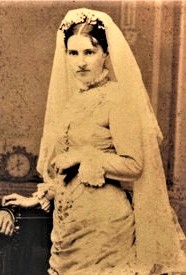
Isoble Harriot Stafford
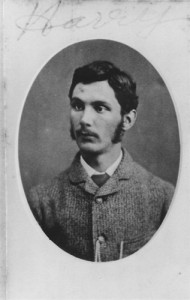
Henry Job Stafford
If I may I would like to focus on just two of the Settlers in Fry and Stafford to attempt to paint a picture of what things looked like 100 years ago in Tenindewa. This entire story took place within just a few kilometres of where we are now and if you can bear with me for the next 10 minutes and try to visualise the picture I attempt to paint I will at the conclusion, to some degree bring that picture, to life.
I need to highlight the fact that I have relied on two authors and their stories. Firstly Kathleen Rumble (formally Palmer) who wrote “Memories of a Migrant” and the other Doreen Lindsey (formally Butler) who wrote “To Sow the Barley”. Fantastically the Interpretive Signage at the front of the Picnic Structure here has captured both of these beautiful ladies along with their classmates at this school. Better than that Doreen is herself here today.
Norman Fry and his wife Marjorie have become somewhat the iconic settlers of Tenindewa. Norman was born in 1874 in Victoria and Marjorie in 1881 in Geraldton. Norman was a Victorian but after attending school and growing up in The Western District he worked on various sheep stations throughout Victoria. In 1897 he came to Western Australia where he taught in the “State System” for four years.
As to why Norman and Marjorie became “iconic settlers” can be determined from the short story written by Doreen Butler about the first settlers and the early development of the Tenindewa township. In her story “To Sow the Barley” she outlines just a little of their lives in this humble outpost. She writes of the fact that they (the Frys’) were not only some of the earliest settlers but indeed the first people in the area to own a car. They had a successful racehorse named “Tenindewa” that in 1915 won the Yalgoo Cup to which a gold watch was presented. Remarkably this watch still exists and keeps good time and is in the safe keeping of his Grandson (Norman Kellier) in Melbourne.
Racing was obviously very important as they (the Fry’s) had a racecourse built on the property but what set them apart was the “stately home” which again according to Doreen “featured verandahs all round with grape vines flourishing”. Also it had “position” so to speak. It was not only located in a reasonably picturesque little paddock but it was clearly visible from the Railway Station, just south of the main road and the village itself. That classic bungalow house stood until about 1980. It became known colloquially as the “Big House” Norman was also Mullewa’s second Road Board Chairman.
Generosity of spirit flows strongly with the Fry’s as it was reported in the Geraldton Guardian on the 21st of September 1916 that the Frys hosted the “Mullewa and Tenindewa Farmers Association Annual Picnic.”
However their strong Christianity, Community Spirit and a vision for the future was demonstrated most overtly when the first school at Tenindewa opened on the 31st of March 1913 in a building donated by the Fry’s.
The building was one room some 20 feet (6 meters) by 12 feet (3.2 meters), which had an iron roof, a new jarrah floor with hessian walls and was situated just across the paddock from the house at the corner of the Geraldton Mount Magnet Road and the Menang Road.
One acre of land was included with this building on the understanding that the Education Department would be responsible for the costs of the survey and land transfer fees. (All the rest was donated by Fry)
The first teacher was Miss Eva Stafford who was eldest daughter of another of the pioneer settler families and Eva will feature again shortly in this story.
The Fry’s left the district in about 1920.
Unfortunately ladies and gentlemen to the best of my knowledge there are no Fry descendants here today but if you ever go to a place “Port Fairy” a most beautiful place in Victoria there is a lady there named Wilma Preston who is an artist of note. Please stop and tell her you have been to this commemoration day. She is a granddaughter of the Fry’s and has been most generous in supplying us information related to this project.
Also there is a grandson Ken Fry from Warnambool, Victoria who has contacted in recent days to wish us all the best with this event.
I quote again “To Sow the Barley”.
“The first farmers came with, as far as I know, a shovel, pick, a team of horses, a drill, with two or ten furrows, and a cultivator”. She continues “Arnold Meadowcroft, Alex and Nat Rumble, Harry Stokes, Norman Fry, Leo Critch, Walter Brenkley, and Henry Stafford [came] to take up land around the railway line. So started this era from 1905 on.”
Henry Job Stafford took up farming land stretching from here to about 12 kilometers north west on the Yuna Road in or about 1908. A bend in the road in that proximity is still referred to by some as “Stafford’s Corner” and it was in fact on this bend that the permanent homestead for the farm “Natti” stood and which would become the residence for his wife and extensive family.
Harriet Isobel and Henry Job, must have been some of the earliest-born non-indigenous Australians, given Harriets time on this earth was from (1864-1940) and born in Botany Bay and, in the same year, Henry Job born in Bulli NSW. (1864-1959).
Highlighting their early entrance into local history it is also known that Harriet was the first white lady to live in the area that we now term Tenindewa. Henry was from a Railway background and was in the late 1800’s a Station Master in NSW. In fact in WA he was indeed the Station Master at the all-important post of Geraldton immediately before the Staffords moved to farming at Tenindewa. Maybe and probably it was this occupation that led to him having the all-time classic and unique nickname of “Narrow Gauge”
The Staffords like their immediate neighbours, the Palmer’s, whose pioneering foray into the region is well documented by family member Kathleen in another story on Tenindewa titled “Memories of a Migrant”, found life was by any measure tough and almost a nightmare at times. Reading Kathleen’s account of day to day happenings we note, and she writes early in her story, about her first winter in Tenindewa after arriving from England as a 14 year old.
[Incidentally that winter she describes, the winter of 1914, was possibly the worst winter collectively Australia has ever had. In terms of grain production the entire country did not even produce enough to feed its own small population and had to import supplementary grain from Europe.]“After tea we would sit around the fire (just an external bonfire) and talk and sometimes sing. The cold wind would blow on our backs so we would turn around and give those [our backs] a turn of the warmth.”
“About nine o’clock we would decide to go to bed but not much comfort awaited us there. The wind blew through the thin hessian walls and we were short of rugs. We lay on one hip until the top one ached with cold and then turn over and attempt to warm that one. The morning was welcomed as we arose and caught the dew that was beginning to drop from the roof”.
But back to the pioneers. One can only remain bamboozled ad infinitum as to why so many of these sane, educated, rational people attempted such a risky endeavor at that time. Was it about the male ego and men’s opportunity and desire to “live the dream” or was it that the alternatives, urban Australia, England, Ireland, or the “Old World” itself generally and actually research will show the alternatives at that time were in fact not all that wonderful.
We can but speculate on the “whys” but what we do know now are the facts in terms of the real risks that these “green adventurous“ took. In today’s terms, and I emphasize today’s terms, we would see these people as bordering on “derelict of duty” and insane. The life and conditions coupled with the isolation, particularly of the pioneering mothers of the day in these hostile surroundings, again in comparative terms, would seem to us now as being a massive risk in rearing children and to the mothers themselves “deprivation personified”.
Harriet Stafford gave birth to no less than 10 children beginning with Viola Harriet at Mittagong NSW in 1884 through to Harry Stratford Stafford in Geraldton in 1906. The firstborn eight of this family lived for a period in its entirety and God help us, let us hope, it was a loving and blissful time. As fate would have it, in the period pre-Tenindewa and post New South Wales they had lost three children. Viola Harriett aged 13 years, Arthur Wesley aged 5 years and Stella May aged 10 months were taken from them over just 11 days in 1898. They are all buried in the Metropolitan area.
In the late 1890s Typhoid Fever was epidemic in Western Australia and it was a disease that thrived in the frontier living conditions that prevailed in many parts of WA that time. Blessfully two further children were born subsequent to this horrendous event.
Henry was not shy and controversy must have been in his blood because he fortuitously, for us anyway, managed to find himself entangled in an investigative mission from the Geraldton Guardian newspaper on Tuesday the 18th of November 1913.
We are never to know what triggered the visit from these reporters of the Guardian newspaper, however, the following story that describes the visit is indeed a treasure in getting a snapshot of Tenindewa at that time.
(Ladies and Gentlemen I am about to quote from a newspaper article written about this area 100 years ago. I hope you find the information interesting but please note the quaint English of the day). The Story begins
“We had been falsely accused of holding a poor opinion of the Tenindewa country. We could never ascertain how such an impression existed, as we were not aware that we had ever said anything derogatory to the district. Whenever we spoke of Tenindewa it was from hearsay as we had never been there. We have concluded “if fault there was” then “hearsay was to blame” and we had better go to Tenindewa and see for ourselves.
There was a standing invitation and an offer to pilot us around from a Mr. HJ Stafford, the enthusiastic Ex-Station Master of Geraldton, so one fine morning we set out with a light heart. In pre-railway days and up to the time it blossomed forth as an agricultural centre it was known as Wolya. The old Wolya well was a favorite camping place for weary travelers across the cruel sandplain on the road to Mullewa and en-route to the Murchison. Contrary to usual practice, the Railway Department has endowed it with a more euphonious name—Tenindewa—how glibly it runs! We are told it a most beautiful place in the spring, and we shall not be surprised if, in the near future, such a beautiful place with a beautiful name is not the theme of a spring-poet”
“En route the train attains at Indarra four miles from our destination”.
“On arrival at Tenindewa we alight at a spic and span station, and are heartily greeted by the “ex stationmaster”, who looks a typical pioneer—bronzed clearly but still wiry, and emblematic of his old railway sobriquet.” (Sob re kay)
(The French speakers among you may know that sobriquet is a very long French word that translates to “nickname” in English and I strongly suspect harks back to “Narrow Gauge” as quoted earlier)
“We set out behind “Duke” for Mr. Stafford’s residence on the banks of the Kockatea Gully, three miles distant, where we were heartily welcomed by Mrs. Stafford and her daughters. ( Ladies and Gentlemen please put your ears on for this next sentence in relation to the description of the daughters!!) Their healthy appearance and assurance that they enjoyed the “simple life” that falls to the lot of those that go to the land, were happy auguries for the tenor of these notes and eloquent testimony to the climate of Tenindewa.”
If I may be so bold my belief is that, that description of Mrs Staffords daughters by a young and enthusiastic reporter of 1913 but may I repeat …..”their healthy appearance and assurance that they enjoyed the “simple life” that falls to the lot of those that go to the land , were happy auguries for the tenor of these notes and eloquent testimony to the climate of Tenindewa” translates simple in modern day terms to “Those girls were hot”
We move on and as previously mentioned the year 1914 was a horror winter and it would have left those early settlers wondering what they had come to. Tenindewa has rainfall records going back to that time and beyond and they show that, that winter was the driest on record and that record remained for one hundred years hence.
I quote again The Geraldton Express [29th September 1914] reports on Tenindewa
“Things around the district are as bad as they can ever be, and few, if any farmers, will have any crops to take off”
“There will not be one bag of wheat produced east of Northern Gully, hence farmers will have to acquire seed wheat and manure for 1915 [planting]”
“With the season an absolute failure, it naturally has a most depressing effect, and many of the farmers would prefer fighting the Germans to farming”.
These turned out to be tragically prophetic words for the Stafford family.
The season of 1915 was completely the opposite with record rainfall. It was known as “the year that bogged the horses” but, given what was to come, would have been a minor worry for our courageous pioneers. Towards the end of 1915 an inconspicuous little article appeared in the Geraldton Guardian under the Tenindewa Notes section.
“Three young fellows from these parts left for Geraldton yesterday to enlist for the front. Claude Wilword, Bert Jones and Lew Stafford and there are a few more men who should go, as the Empire’s needs should come first”.
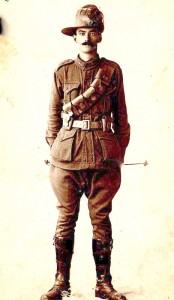
Lewis Harrington Stafford. Aged abt 26. Going off to WW1 Feb 16th 1916 on the ship SS Warulda. It was Eva’s birthday. 1500 men and Officers on board. i have his war diary x 2. He died whilst on duty in Zonnebeke Belgium France.. Monday 8th October 1917. His final mission was with the 110th Howitzer Bty 10th F.A. bgde 4th Autsralian Division.
Neighbor and author, Kathleen Palmer, takes up the story and writes in her book:
“Our cousin Claude, Lew Stafford and a chap that worked for them, Bert Jones, decided to enlist. I think a recruiting sergeant who had been staying with the Stafford’s had fired up their imaginations. We were staying in Geraldton when they went on their embarkation. We got up early to farewell them from the Railway Station. Those boys wanted to kiss us goodbye but we would not let them. Looking back how I regret our very reserved upbringing because Lew and Bert were soon blown to pieces.”
Records will show Lewis Harrington Stafford was killed in action on the 8th of November 1917 in the district of Zonnebeke, Belgium. He was just 26 years of age.
Seemingly, despite another massive setback, the Stafford’s pushed on and their activities were very diverse throughout the district. It is reported that on the 28th of July 1917 a farmer named Richard Dunkin and a newspaper man named Mr. E Constantine were washed down the flooded creek along with their unfortunate horses and the buggy. It is further reported that “The Miss Staffords” heard their cries for assistance and gave the alarm at the house which was ½ mile (1Kilometer) away. Suffice to say the story has a very happy ending for all concerned including the horses.
In an article in March 1921 it is apparent that Charles, Henry’s eldest son, is now the President of the “Primary Producers Association” Tenindewa Branch. Again in 1921 the Miss Staffords were reported “prominent” in the “Annual Tenindewa Spinsters Ball” and again “prominent” in the preparation of the festivities surrounding the celebration of the wedding of Miss Jean Eves and Mr. M.J. Kember which was held at the Tenindewa Hall.
Tragically however, an event that must have been somewhat of a final blow to Henry and Harriet’s resolve occurred on the 14th of December 1921. Henry, his eldest son Charles and youngest son Harry were driving to Tenindewa in a horse and sulky. They stopped to open a gate about midway to their destination (which would place them about one kilometer west of where we are now) when the horse spooked and Harry as a consequence was run over and killed by the sulky wheel. It is stated that “it was the one day in his life he did not get to hug his mother goodbye”. He was just fourteen years of age and he was laid to rest in Geraldton. Unbelievably this meant that five of their ten children had perished in miserably sad and unfortunate circumstances and in a considerably short space of time. Life seemingly unraveled for Henry and Harriet from there.
By this time the onset of the greatest financial disaster to hit the world (The Great Depression) was starting to have its affect and this left eldest son Charles and his family to continue what Henry and Harriet had begun.
Henry’s daughter and thus Charles’s sister pretty Ivy Garrett Stafford married the Tenindewa Store owner Bill Griffiths and remained in the area until the (1940’s) They had two children, Brian and Corrine. Bill Griffiths actually built the current Store. His son Brian and thus grandson of Henry has sent a message of support for today and that message can be viewed on www.tenindewa.com
Eva Mary, Henry’s eldest daughter, again most attractive, was Tenindewa’s first teacher. She initially taught in the school built privately by Norman Fry and in his paddock south of the siding for two years. She then continued on for another three years when the school was relocated here and when it became an official “State School” in 1915. Later she married prominent Tenindewa farmer Richard Dunkin and they had three children including “Dick” who was a larger than life character and continued farming at Tenindewa until he and his wife, Del, sold in the mid-1970s. Del is still with us and lives in Perth. That first Tenindewa schoolteacher Eva Mary Stafford has a great-grandchild here today in Jan Paton.
Henrys eldest son Charles had married Elsie Howson and their children included the stunning Esme who went on to marry David Williams. David is featured here on the picture on the rock in front of the school and he taught at Tenindewa for 5 years. His daughter and thus great granddaughter of Henry, Jane Etianne, (Et e an) is here today with a further two generations in tow.
Charles’s youngest daughter Nellie married William (Bill) Wheeldon a Yuna farmer and that name lives on in the Yuna area and beyond today. Three of their children are here today in Ronda Williamson and Les and Alwin Wheedon. They are of course also great-grand-children of Henry.
And now to the document that made this day possible and plausible. It is the entire history of this school and was compiled and written by a Mr David Meadowcroft some 40 years ago. David is an amazing history buff and he is also the grandson or former Tenindewa pioneers and is in the audience. David we thank you for your foresight and your presence today. (By the way that entire document is available on the Tenindewa Website)
Also though not mentioned in this story so far is the “Stepping Stones across the Lake” as it is called on the newly positioned School Black Boards. If you don’t know of stone causeway please have a look before you leave today. It is just 100 metres to the south of where we are now. That structure was built by a Mr George Bone and his son Ron. Ron’s daughter in law and renowned local “School Mam” along with daughter Lillie are here today and amazingly Ron’s wife, the larger than life, Maureen is here also.
Now to the two “Short Stories” that made up much of this speech today and firstly author and former student Doreen Lindsay is here today. Doreen you are indeed our Guest of Honour today.
The second book’s author was a lady named Kathleen Palmer who has a grand-daughter and great granddaughter who were to be here today. However Marie Fritz and Kathryn Fritz (by the way Kathryn has copies of that book still available if anyone would wish to purchase one) can be contacted by writing to PO Box 29 Willetton 6955.
The “Big House” across the highway from the store was occupied subsequent to the Fry by a gentleman named Petroff. His story has become Tenindewa’s most intriguing mystery, a story within itself. Jessie Cameron, who became Petroff’s wife was a teacher at this school. Their granddaughter Kath Wheeldon is here today. Incidentally that house has several owners and occupants including the Ullrich’s, Williamsons, Brooks’, Giltrow’s and Gibson’s and there were more and some of them or their descendants are here today.
And finally although not connected to the School directly we have descendants of a well loved and respected raconteur, hero, and legend in Ned Higgins. His granddaughter Christine Loundes and her mother are with us also. Some form of Ned’s life and exploits will be posted on the Tenindewa website in the not too distant future. Christine is compiling what I believe will be a book and she would love to talk to any of you today that would like to contribute with information to that.
In conclusion can I take this opportunity to thank all the people involved with this project and most importantly the City of Greater Geraldton for making the grant for the project available. I must thank especially the delightful Trudi Cornish from the History Department there.
Thanks to all of the helpers that have got this symbolic structure to where it is today. Thank all of you for travelling and contributing, so to make this day a success and I pray this humble building will be enjoyed and understood by many for years to come.
Ladies and gentleman there was a massive about of complex twists and connections in that story…please forgive me..but if you are so inclined to get a better understanding of what was said this speech is now also on www.Tenindewa.com.
Speech by Kevin Weir, Master of Ceremonies
I would like to call on Elaine Walley to give a Welcome to Country address
In the days when there was a small settlement of railway workers living in Tenindewa, there were quite a few aboriginal families stationed here. Some of the families that come to mind are the Dalgety’s the Dann’s and the Collards so it is fitting that we have a Welcome to Country address today.
Before I go any further I would like to:-
Welcome the Mayor of the City of Greater Geraldton, Mr Ian Carpenter
Councillor Jennifer Critch
Ex-students of the Tenindewa School.
Friends and relatives of these students.
Ladies and Gentlemen
Thank you all for coming today to remember the early days in Tenindewa when there was an active School on this site which was attended by some of the true pioneers of this district. It is one hundred years since this school was opened although there was another school on the corner of Menang Road and the Geraldton Road which ran for two years prior to this before it closed. Hence you will notice on the plaque at the front it shows there were teachers here from 1913. The school on this site was opened in March 1915 and closed in August 1939. There was also another school about 12 km out the Tenindewa – Yuna road which ran for only five years from 1923 to 1928 and it was called the Bindu School.
Tony Critch came up with the idea of erecting a building of the same dimensions as the old school on this site which could double as a picnic shelter for the many tourists that camp in this reserve during the wildflower season and be dedicated to the pioneers of Tenindewa. I am sure this replica of the original school will generate a lot of interest in the history of this area and along with the Tenindewa website which will be unveiled later this afternoon, I hope you will all learn a bit more about our past. Tony was responsible for gathering a lot of historical information on this district and is also the one who put forward a submission to The City of Greater Geraldton and was successful in getting a grant for the building materials for the structure which as amateur builders we constructed over several community busy bees. Tony was also successful in obtaining a grant from the City of Greater Geraldton to set up a Tenindewa web site which we will talk about over a cuppa in the old shop later.
Thank you to Ian Carpenter and The City of Greater Geraldton for your support in bringing these projects to fruition.
‘Blackboard’ Signs on the Replica School Building









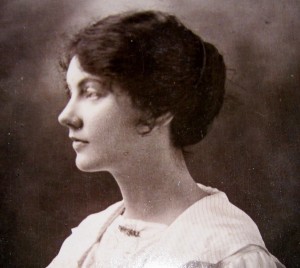
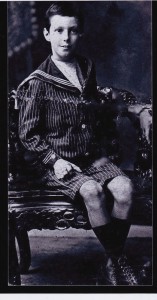
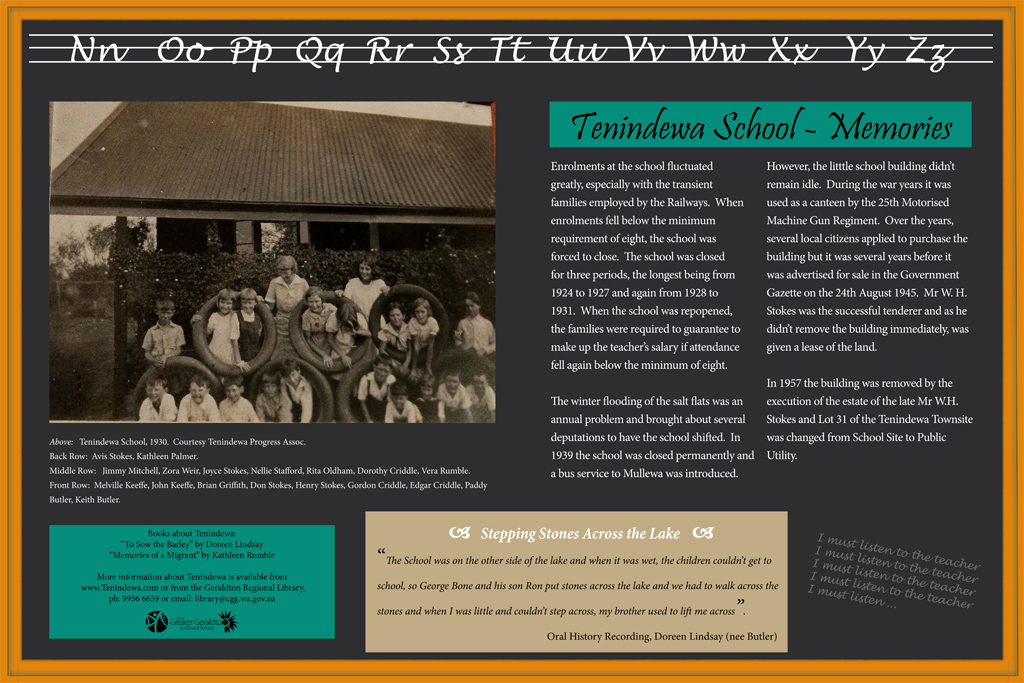
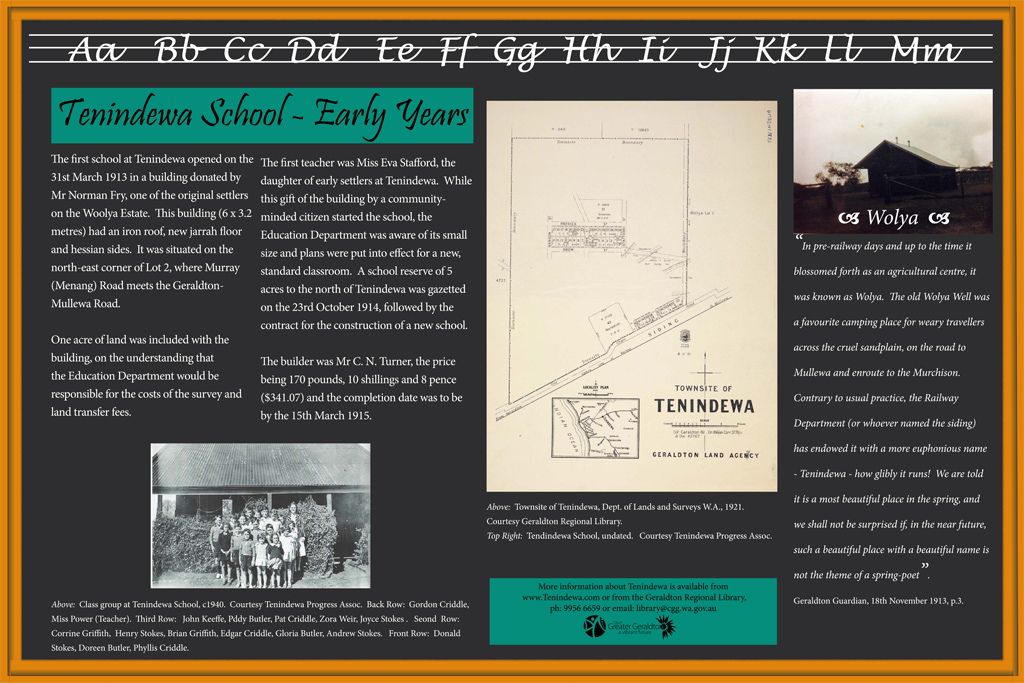
Comments
What a lovely day we enjoyed so much and lovely to see everyone Tony Kevin you spoke well We Said Pop Nana Shirley Our Mum Uncle Athol Lived in a lovely community Tenindewa thankyou again Happy tractor driving and a good season